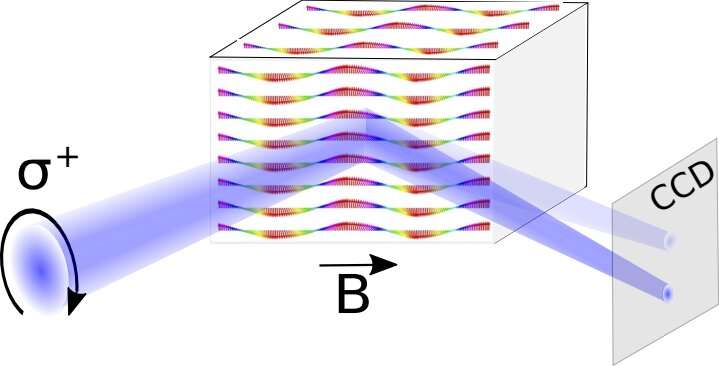Spintronics: A new tool at BESSY II for chirality investigations

Information on complex magnetic structures is crucial to understand and develop spintronic materials. Now, a new instrument named ALICE II is available at BESSY II. It allows magnetic X-ray scattering in reciprocal space using a new large area detector. A team at HZB and Technical University Munich has demonstrated the performance of ALICE II by analyzing helical and conical magnetic states of an archetypal single crystal skyrmion host. ALICE II is now available for guest users at BESSY II.
The new instrument was conceived and constructed by HZB physicist Dr. Florin Radu and the technical design department at HZB in close cooperation with Prof. Christian Back from the Technical University Munich and his technical support. It is now available for guest users at BESSY II as well.
"ALICE II has an unique capability, namely to allow for magnetic X-ray scattering in reciprocal space using a new large area detector, and this at up to the highest allowed reflected angles," Radu explains. To demonstrate the performance of the new instrument, the scientists examined a polished sample of Cu2OSeO3.
Mott-Insulator examined
Cu2OSeO3 is a Mott insulator with a cubic crystal structure which lacks inversion symmetry. This results in the development of helical magnetic ordering: magnetic spins rotating clock- or anticlock- wise with respect to the propagation direction. The magnetic ion is copper (Cu) and the chirality of the magnetic texture cannot be reversed by external stimuli. The sample quality, which is of key importance, was assured by Dr. Aisha Aqueel.
Novel way to investigate magnetic textures
The scientists could observe helical and conical magnetic modulations as satellite reflections around the specular peak via X-ray magnetic scattering with circularly polarized X-rays.
"What's more: the chirality information of the underlying spin textures is encoded as its dichroic intensity," Radu points out. These results pave a novel way to investigate chiral and polar magnetic textures with ultimate spatial resolution and at the very short time scales typical to synchrotron X-ray experiments, and expand a range of materials for the topological spintronics via fast screening of candidate materials.
The research was published in Science and Technology of Advanced Materials.
More information: V. Ukleev et al, Chiral surface spin textures in Cu2OSeO3 unveiled by soft X-ray scattering in specular reflection geometry, Science and Technology of Advanced Materials (2022). DOI: 10.1080/14686996.2022.2131466
Journal information: Science and Technology of Advanced Materials
Provided by Helmholtz Association of German Research Centres





















